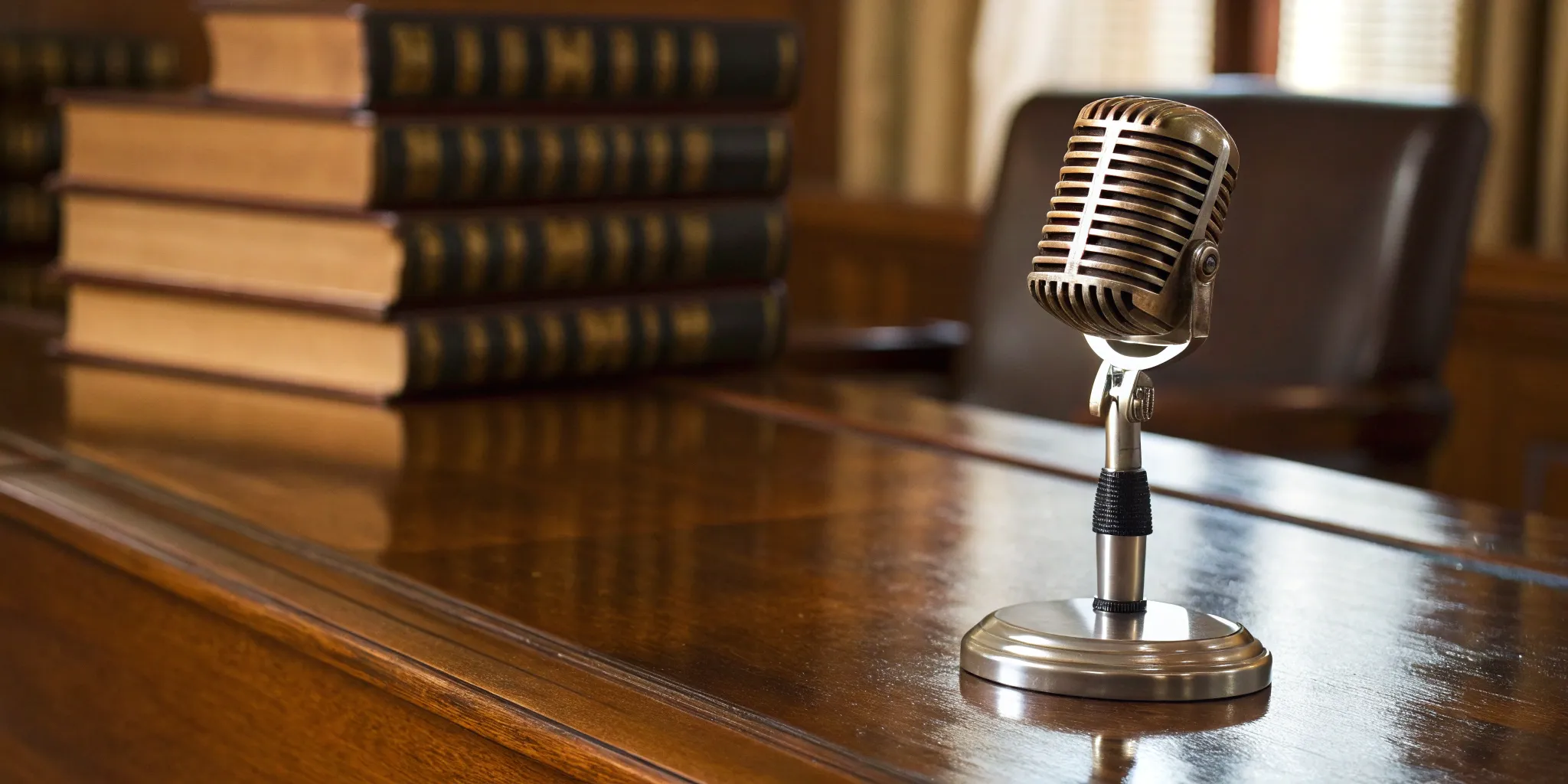Anyone with a budget can buy an ad. But you can’t buy credibility—that has to be earned. This is the fundamental difference between advertising and public relations. When a respected publication features your story or a well-known podcast hosts you as a guest, it comes with a layer of trust that paid placements simply can’t replicate. This is the power of earned media. The process of securing this kind of coverage is managed through strategic media relations services. In this article, we’ll walk through what those services entail, how to build a strategy that works, and how to measure your success along the way.
Key Takeaways
- Treat Media Relations as Relationship Building: Go beyond transactional pitches by providing genuine value to journalists. When you become a reliable resource for them, you earn consistent, credible coverage that advertising can’t buy.
- Define Success Before You Start: A strong PR strategy begins with clear, measurable goals. Know what you want to achieve—whether it’s book sales or thought leadership—and track the right KPIs to prove your efforts are driving real business results.
- Align PR with All Your Business Goals: Ensure your media relations efforts are woven into your marketing and sales strategies. A consistent message across all channels builds a cohesive brand and makes every piece of content work harder for you.
What Exactly Are Media Relations Services?
At its core, media relations is the art of building and maintaining strong relationships with journalists, editors, bloggers, and influencers. It’s about creating a mutually beneficial partnership where you provide them with valuable stories and expertise, and in return, you gain credible exposure for your brand. Unlike advertising, this isn’t about paying for a spot. It’s about earning it through a compelling story, unique insight, or expert commentary that genuinely interests a reporter’s audience.
For authors, CEOs, and founders, this is how you move from being just another name in your industry to becoming the go-to expert everyone wants to hear from. It’s a strategic process that turns your knowledge and experience into powerful, third-party-validated press. When done right, media relations doesn’t just get you seen; it gets you seen in the right places, by the right people, building a reputation that lasts.
What’s Included in a Media Relations Strategy
A media relations strategy is your roadmap for getting noticed. It’s a clear plan that outlines who you want to reach, what you want to say, and which media outlets are the best fit for your message. This becomes essential when you want to launch a new book, build your personal brand, or position yourself as a thought leader in your field. A strong strategy also helps you manage your reputation during a crisis and ensures your key events get the attention they deserve. It’s about being proactive, not reactive, in shaping your public narrative and making sure every media opportunity aligns with your long-term goals.
How Media Relations Builds Your Brand
Think of media relations as the engine that builds your brand’s reputation through earned media—coverage you don’t pay for. When a respected journalist or publication features your story, it comes with a layer of credibility that advertising just can’t buy. This is how you manage public perception and tell your story on a massive scale. Consistent, positive coverage establishes trust and familiarity with your audience. Over time, these placements build on each other, solidifying your status as a credible and authoritative voice in your field. It’s the difference between telling people you’re an expert and having a major publication do it for you.
The Types of Media Coverage You Can Secure
Media coverage today goes far beyond a simple newspaper clipping. A comprehensive media relations effort can land you in a variety of influential places. This includes feature articles in top-tier online publications, interviews on popular podcasts, segments on broadcast TV, and mentions in industry-specific blogs. You could also become a trusted source for journalists, providing expert quotes that position you as a thought leader. Each piece of coverage works to amplify your message and reach new audiences, building a powerful and diverse media footprint that reinforces your expertise and credibility across different platforms.
Key Media Relations Services You Need
Media relations is more than just sending out a press release and hoping for the best. It’s a strategic function that involves a suite of services designed to build, manage, and protect your public image. A great PR partner acts as your advocate, storyteller, and strategist, ensuring your message reaches the right people through the right channels. For leaders, authors, and entrepreneurs, these services are the building blocks of a powerful personal brand. They work together to create a consistent and compelling narrative across different media platforms, from major news outlets to niche industry blogs.
Understanding these core services will help you see how a public relations strategy can directly support your business goals, whether you’re launching a new book, announcing a company milestone, or establishing yourself as a thought leader in your field.
Crafting and Distributing Press Releases
Think of a press release as an official announcement to the media. It’s a concise, compelling document that shares something newsworthy about you or your business. But writing one is only half the battle. A skilled PR team knows how to frame your news in a way that captures a journalist’s attention. They also have established relationships with reporters and editors, ensuring your announcement lands in the right inbox. This targeted press release distribution is what separates a release that gets ignored from one that turns into a feature story.
Preparing for Media Interviews
Securing an interview is a huge win, but the real work begins once it’s booked. Media training is essential for delivering your message clearly and confidently, whether you’re on a podcast, a local news segment, or a national morning show. A media relations expert will help you refine your key talking points, anticipate tough questions, and practice your delivery. This preparation ensures you stay on message and make the most of every opportunity. The goal is to help you become a go-to source for the media, someone they can rely on for insightful and articulate commentary.
Managing Crisis Communications
Even with the best intentions, things can go wrong. A negative review, a product recall, or an off-the-cuff comment can quickly spiral into a reputation crisis. This is where a crisis communications plan becomes invaluable. Your PR team will help you prepare for potential issues before they happen and manage the situation if they do. They act as your strategic counsel, helping you respond quickly, transparently, and effectively to protect the brand you’ve worked so hard to build. Having a crisis management strategy in place provides peace of mind and a clear path forward during challenging times.
Building Your Digital PR Presence
In today’s world, your online presence is your digital storefront. Building a strong digital PR presence means managing how you appear in online searches, on social media, and in digital publications. This service focuses on securing online media coverage, managing your online reviews, and monitoring what people are saying about you. It also involves placing you in relevant online conversations and securing guest spots on popular podcasts or features on influential blogs. A positive digital footprint helps build credibility and ensures that when people look you up, they like what they find.
Planning Events and Securing Coverage
Events like book launches, speaking engagements, or press conferences are fantastic opportunities to connect with your audience and the media directly. A PR agency can handle everything from planning and promotion to inviting key journalists and influencers who can amplify your message. The objective is to create a memorable experience that generates positive buzz and media coverage. By managing the logistics and media outreach, your team ensures your event not only runs smoothly but also achieves its strategic goal of increasing your visibility and reinforcing your brand story.
How to Build and Maintain Media Relationships
At its core, public relations is about relationships. It’s not just about sending out a press release and hoping for the best; it’s about building genuine, long-term connections with the people who tell stories for a living. Think of it as a professional friendship—a two-way street where you provide value to journalists, and in return, they help share your story with the world. This process takes time, consistency, and a thoughtful approach, but it’s the single most important investment you can make in your brand’s visibility.
When you have strong media relationships, you’re no longer just another name in a crowded inbox. You become a trusted source, an expert they can turn to for a quote, and the first person they think of when a relevant story breaks. These connections are what separate a one-time media hit from a sustained, impactful presence in the public eye. Our team at Leverage with Media has spent years cultivating these relationships, and we know that the key is to focus on mutual benefit and respect. It’s about understanding their needs and consistently showing up as a reliable resource.
Understand What Journalists Want
Before you ever send a pitch, you need to shift your perspective. Journalists aren’t there to serve your brand; they’re there to serve their audience. They are constantly looking for fresh, relevant, and compelling stories that will resonate with their readers. The goal is to work together so that both sides benefit. This means you need to do your homework. Read their past articles, understand their beat, and get a feel for their unique voice and angle. When you can show a journalist that you’ve taken the time to understand their work, you immediately stand out and demonstrate that you respect their time.
Create Pitches That Get Noticed
A journalist’s inbox is a battlefield for attention. To win, your pitch needs to be sharp, relevant, and concise. The most effective media relations strategies are built on smart story ideas that are tailored to the specific journalist you’re contacting. Start with a subject line that clearly and compellingly states your story. In the body of the email, get straight to the point. Explain what the story is, why it’s newsworthy now, and why it’s a perfect fit for their audience. Personalize it by referencing a recent article they wrote, and always make it easy for them to say yes by providing all the necessary information upfront.
Develop Your Professional Network
Building relationships goes beyond the inbox. You need to actively develop your professional network by engaging with journalists and editors where they are. Follow key media contacts on platforms like LinkedIn and X (formerly Twitter). Share their work, offer thoughtful comments, and become a familiar name. The goal is to be seen as a helpful expert in your field, not just someone asking for a favor. By providing value without expecting anything in return, you build the trust that is essential for successful media relations. When you finally do send that pitch, it will be received as a message from a respected colleague rather than a stranger.
Manage Your Media Lists Effectively
A well-curated media list is one of your most powerful PR tools. This isn’t just a static spreadsheet of names and outlets; it’s a dynamic guide to your key contacts. For each person on your list, you should track their beat, recent articles, contact preferences, and any past interactions you’ve had. Keeping an updated list of contacts is vital for making sure your pitches are timely and land in the right hands. The media landscape changes quickly—journalists move to new publications, and beats evolve. Regularly updating your list ensures your outreach efforts are always targeted and effective.
Follow Communication Best Practices
Once you’ve made a connection, how you communicate is everything. Your reputation is built on being reliable, responsive, and honest. One of the golden principles of media relations is to always tell the truth, even when it’s difficult. Trust is your most valuable asset, and it’s instantly destroyed by dishonesty. Be prompt in your replies, respect their deadlines, and be transparent in all your interactions. If you don’t have an answer to a question, it’s better to say you’ll find out than to guess. Consistently showing up as a professional and trustworthy source will solidify your relationships for years to come.
Create and Implement Your Strategy
Once you understand the fundamentals of media relations, it’s time to build a plan. A great strategy doesn’t just happen; it’s a deliberate process of setting goals, crafting your message, and executing with precision. This is where you turn your vision for your brand into a concrete, actionable roadmap that will guide your outreach and help you secure the media attention you deserve. Think of it as the blueprint for building your public profile.
Set Clear Objectives
Before you write a single pitch, you need to define what success looks like. What do you want to achieve with your media relations efforts? Are you aiming to drive sales for your new book, establish yourself as a thought leader, or attract investors? Your objectives should be specific and measurable. Effective performance measurement relies on both qualitative indicators, like brand perception, and quantitative ones, such as the number of media placements or website traffic from a feature. Setting clear goals from the start ensures every action you take is purposeful and moves you closer to your desired outcome.
Develop Your Content Strategy
Your content is the heart of your PR campaign. This is where you shape your narrative and decide which stories to tell. A strong content strategy goes beyond just announcing news; it uses creative storytelling to connect with your audience on an emotional level and spark meaningful conversations. Think about the core message you want to convey. What unique perspective can you offer? What stories from your journey as a founder, author, or expert will resonate with the public? Your content should be authentic, compelling, and tailored to the media outlets you want to reach.
Choose Your Pitching Methods
With your story ready, you need to decide how you’ll get it in front of the right people. Your pitching method can make all the difference. While sending out a press release has its place, the most impactful coverage often comes from personalized outreach. A key part of successful PR is identifying “live” media opportunities and building genuine relationships with journalists who cover your industry. Research reporters, understand their beat, and craft pitches that show you’ve done your homework and have a story that is a perfect fit for their audience.
Maintain a Consistent Brand Message
Consistency is the key to building a memorable and trustworthy brand. Every interview, article, and social media post should reinforce your core message. While marketing often focuses on immediate sales, PR builds credibility that delivers value over the long term. Define your key talking points and brand voice, and ensure they are reflected in all your communications. When your message is consistent, you become more recognizable and reliable in the eyes of the media and your audience, solidifying your reputation as an expert in your field.
Manage Your Timeline
A successful media relations strategy requires careful planning and management. Create a timeline that outlines your key activities, from when you’ll pitch certain stories to when you’ll follow up with journalists. A content calendar can help you stay organized and ensure a steady stream of outreach. It’s also important to be flexible. The media landscape moves quickly, and a timely story tied to a current event can land you a major feature. Regularly review your progress and be prepared to adjust your plan to capitalize on new opportunities as they arise. Using the right tools is essential for effectively measuring your PR campaigns’ success and making informed decisions.
How to Measure Your Media Relations Success
Securing a great media placement feels like a huge win, but how do you know if it’s actually moving the needle for your brand? Measuring the success of your media relations strategy is about more than just counting clippings. It’s about understanding the real-world impact of your efforts and proving the value of your investment. Without clear metrics, you’re essentially flying blind, unable to tell which strategies are working and where you should focus your energy next.
A solid measurement plan helps you connect your PR activities to tangible business goals. Are you trying to drive traffic to your website, generate leads for your new book, or establish yourself as the go-to expert in your field? By tracking the right data, you can see exactly how media relations contributes to these objectives. This process involves identifying your key performance indicators (KPIs), analyzing the reach and tone of your coverage, and even calculating the financial return on your investment. This data-driven approach not only justifies your PR budget but also provides the insights you need to refine your strategy for even better results. At Leverage with Media, we believe that a successful campaign is one you can measure, which is why we build clear metrics into every client strategy.
Identify Your Key Performance Indicators (KPIs)
Before you can measure success, you need to define what it looks like. Key Performance Indicators (KPIs) are the specific metrics you’ll use to track progress toward your goals. While every campaign is different, a great starting point is media coverage reach, which tracks how many people saw your brand’s message. This gives you a top-level view of your visibility. From there, you can layer in other KPIs that align with your business objectives, such as website referral traffic from media placements, increases in social media followers, or the number of qualified leads generated from a specific feature. The key is to choose metrics that provide a clear picture of how PR is supporting your overall growth.
Analyze Your Media Reach
Media reach tells you the potential size of the audience that saw your coverage. Tracking the volume of media placements you secure provides a quantifiable value that you can use to demonstrate the effectiveness of your PR efforts. But it’s not just about quantity; quality matters, too. A feature in a top-tier publication like Forbes or Entrepreneur will have a much greater impact than a mention on a small, unknown blog. When analyzing your reach, consider the outlet’s credibility, its audience demographics, and how well it aligns with your target market. This deeper analysis helps you understand the true value of each placement and focus on securing coverage that makes a real impact.
Understand Sentiment Analysis
It’s not enough to know that people are talking about you; you need to know how they’re talking about you. Sentiment analysis is the process of determining whether media coverage is positive, negative, or neutral. Consistently positive sentiment indicates a strong brand presence and influence, which directly impacts your reputation and customer loyalty. While a single negative mention isn’t the end of the world, tracking sentiment over time helps you spot potential issues before they become a crisis. This qualitative data adds crucial context to your quantitative metrics, giving you a more complete understanding of your brand’s public perception.
Calculate Your Earned Media Value
How do you put a dollar value on a great media placement? That’s where Earned Media Value (EMV) comes in. EMV is a metric used to estimate the monetary value of your media coverage by comparing it to the cost of equivalent paid advertising. While it’s not a perfect science, it’s an incredibly useful tool for demonstrating the financial impact of your PR work. As noted by experts at Cision, earned media mentions are a measurable and comparable metric over time. Calculating your EMV helps highlight how your team’s ability to secure strategic message positioning across media outlets translates into tangible value for your brand.
Track Your Social Media Impact
In today’s media landscape, a story doesn’t end once it’s published. The conversation continues on social media, and tracking that impact is essential. Monitor how your media placements are being shared across platforms like LinkedIn, X (formerly Twitter), and Instagram. Key metrics to watch include the number of shares, comments, likes, and new followers you gain as a result of your coverage. Many social platforms have built-in analytics tools that make it easy to see how your content is performing. This data shows how your message is resonating with a wider audience and helps you identify which stories are sparking the most engagement.
Determine Your ROI
Ultimately, the most important measure of success is your return on investment (ROI). This involves connecting your PR efforts directly to business outcomes. While it can be challenging to draw a straight line from a media feature to a sale, you can focus on tangible outcomes and measurable objectives. For example, you can track conversions from referral traffic, leads generated through a call-to-action in an article, or an increase in book sales following a podcast interview. According to Agility PR, focusing on these metrics demonstrates real value. This is how you prove that your media relations strategy isn’t just a cost center—it’s a revenue driver.
Overcome Common Media Relations Challenges
Even the most well-crafted media relations strategy will hit a few bumps in the road. The media landscape is constantly changing, and journalists are busier than ever. Instead of seeing these hurdles as setbacks, think of them as opportunities to refine your approach and strengthen your brand’s resilience. From managing the expectations of your internal team to cutting through the noise of a crowded market, every challenge presents a chance to get smarter and more strategic.
Successfully handling these common issues is what separates a good PR effort from a great one. It requires a mix of foresight, flexibility, and strong communication. By anticipating potential problems and having a plan in place, you can keep your media relations efforts on track and continue building positive momentum for your brand. The key is to focus on what you can control: your preparation, your relationships, and your message. Let’s walk through some of the most frequent challenges and the practical steps you can take to address them head-on.
Manage Stakeholder Expectations
One of the biggest challenges in PR is ensuring everyone involved is on the same page. Your CEO, board members, or investors might expect to see a feature in Forbes overnight, but media relations is a long game that requires patience. Defining and managing expectations is crucial for building trust and demonstrating the value of your work.
Start by setting clear, realistic goals together. Instead of promising specific outlets, focus on achievable metrics like the number of pitches sent, target audience reach, or key message pull-through. Provide regular, transparent updates on your progress—both the wins and the learning moments. This consistent communication helps stakeholders understand the process and appreciate the steady work that leads to big results.
Create a Crisis Response Plan
It’s not a matter of if a crisis will happen, but when. Whether it’s a negative review, a social media misstep, or an operational issue, being unprepared can turn a small problem into a major disaster. When it comes to media relations, effective problem-solving is everything. A well-documented crisis response plan allows you to act quickly and thoughtfully, protecting your brand’s reputation when it matters most.
Your plan should identify potential risks, designate a spokesperson, and include pre-approved holding statements and key messages. Outline a clear chain of command for communication so your team can address issues swiftly and speak with one unified voice. Having this framework ready lets you manage the narrative, communicate with transparency, and maintain public trust.
Gain Access to the Right Media
With thousands of pitches flooding journalist inboxes daily, simply getting your story in front of the right person can feel like a monumental task. Connecting with relevant media and influencers is a significant challenge, but it’s one you can overcome with a targeted, relationship-focused approach. Forget mass email blasts; the key is personalization and genuine connection.
Start by building a curated media list of reporters who actually cover your industry or niche. Follow their work, engage with them on social media, and understand what kind of stories they’re looking for. When you do pitch, make it personal. Reference a recent article they wrote and clearly explain why your story is a perfect fit for their audience. Building these authentic relationships is the foundation of lasting media success.
Allocate Your Resources Wisely
Your time, budget, and energy are all finite resources. To get the most out of your media relations efforts, you need to be strategic about where you invest them. Chasing every possible media opportunity can lead to burnout with little to show for it. Instead, focus on the activities that will deliver the greatest return for your brand and help you achieve your specific goals.
This means carefully scrutinizing news pitches and prioritizing the outlets that matter most to your target audience. Sometimes, a placement in a niche trade publication is more valuable than a mention in a mainstream outlet. It also involves weighing the benefits of earned media against paid or sponsored opportunities. By making deliberate choices, you can allocate your resources effectively to maximize your impact and ensure your efforts are both sustainable and successful.
Stand Out from the Competition
In a saturated market, making your brand’s voice heard is a constant challenge. To capture media attention, you need to offer something more than just a self-promotional announcement. The best way to differentiate yourself is by providing genuine value to journalists and their audiences. This means shifting your mindset from “what can I get?” to “what can I give?”
One of the most effective tactics is actively filling reporter queries and needs. Use services like Help a Reporter Out (HARO) to provide expert commentary on trending topics. Develop unique story angles backed by original data or fresh insights that no one else is talking about. By positioning yourself as a reliable and insightful resource, you not only secure media coverage but also build a reputation as a go-to expert in your field.
How to Choose the Right Media Relations Partner
Finding the right media relations partner is a lot like hiring a key team member. You’re not just outsourcing a task; you’re bringing in an expert to help shape your public narrative and grow your brand. The right agency becomes an extension of your team, deeply understanding your vision and working proactively to achieve your goals. The wrong one can lead to wasted resources and missed opportunities.
So, how do you find the perfect fit? It comes down to looking beyond the sales pitch and evaluating a few core areas. You need a partner with a proven track record in your field, a suite of services that aligns with your specific objectives, and a communication style that feels collaborative. It’s also essential to find a team whose capabilities you trust and whose pricing structure provides clear value. By carefully considering these factors, you can build a partnership that generates meaningful results and strengthens your brand for the long haul.
Look for Proven Experience and Expertise
When you start evaluating potential partners, their experience should be at the top of your checklist. Look for an agency that has a history of success with clients similar to you, whether you’re a CEO, a founder, or a non-fiction author. Don’t be shy about asking for case studies or examples of their work. A confident and capable agency will be proud to show you their past results.
The goal is to find a team that focuses on achieving your specific business goals, not just securing any media mention. A great partner understands your industry’s landscape and has established relationships with the journalists and outlets that matter most to your audience. This specialized expertise is what separates a good agency from a great one.
Align Their Services with Your Goals
Before you sign a contract, get crystal clear on what you want to achieve. Are you launching a book and need to generate buzz? Are you trying to establish yourself as a thought leader in your industry? Your goals will determine which services you need. A comprehensive PR agency offers more than just press release distribution; they provide strategic counsel, media training, crisis management, and digital PR support.
Discuss your objectives openly with potential agencies and ask how their specific services will help you reach them. The right partner will listen to your needs and tailor a strategy that directly supports your vision for growth. They should be able to explain exactly how their efforts will contribute to building your reputation and connecting with your audience.
Find a Compatible Communication Style
A strong partnership is built on clear and consistent communication. You need to find a team you genuinely connect with and whose communication style matches your own. During initial conversations, pay attention to how they listen and respond. Do they understand your brand voice? Do they seem genuinely invested in your story? This initial chemistry is often a good indicator of the long-term working relationship.
Before kicking things off, establish expectations for updates and reporting. How often will you meet? Who will be your main point of contact? A successful PR campaign connects with people on an emotional level while driving real business results, and that starts with a strong, collaborative relationship with your agency. You can often get a feel for this on an initial consultation call.
Factor in Your Budget
While budget is always a consideration, it’s important to view public relations as an investment rather than an expense. The cheapest option is rarely the best one. Instead of focusing solely on cost, consider the value a potential partner can provide. A top-tier agency will be transparent about their pricing and what’s included, helping you understand the return on your investment.
Ask agencies how they measure success and what key performance indicators (KPIs) they track. A great partner will focus on tangible outcomes, like increased website traffic, lead generation, or securing features in high-authority publications. Understanding how they demonstrate value will help you make a confident and informed decision that aligns with your financial plans.
Assess the Team’s Capabilities
The success of your media relations efforts will ultimately come down to the people working on your account. When vetting an agency, look beyond the founder or the person leading the sales pitch and get to know the team that will be handling your day-to-day strategy and outreach. What is their background? Do they have direct experience in your niche?
A strong team will have a diverse skill set and a deep understanding of the media landscape. They should be strategic thinkers who can offer creative ideas and execute them flawlessly. Don’t hesitate to ask about the specific individuals you’ll be working with. Getting to know the agency’s team will give you confidence that your brand is in capable and experienced hands.
Integrate PR into Your Broader Strategy
Think of media relations as a vital ingredient in your overall brand recipe, not a separate dish. To truly make an impact, your PR efforts can’t operate in a silo. They need to be woven into the fabric of your marketing, sales, and business development strategies. When your media placements, social media content, and marketing campaigns all tell the same cohesive story, you create a powerful and unified brand presence that resonates deeply with your audience. This integrated approach ensures that every piece of communication is working toward your larger goals.
A disconnected strategy can send mixed signals, confusing your audience and diluting your message. But when PR is aligned with your broader objectives, it acts as an amplifier. A feature in a major publication can fuel your social media content for weeks, provide credibility for your sales team, and drive qualified traffic to your website. By viewing PR as a central part of your growth engine, you can create a self-reinforcing cycle of visibility and credibility. Our strategic packages are designed to do just this, ensuring your media relations efforts support every facet of your brand.
Align PR with Your Marketing Efforts
It’s a common question: What’s the difference between PR and marketing? While they are closely related, they serve distinct functions that work best together. Marketing often focuses on direct promotion to drive immediate sales, using paid channels like ads. PR, on the other hand, centers on building long-term credibility and trust through earned media—coverage you don’t pay for.
Think of it this way: marketing is telling people you’re a rockstar, while PR is getting others to say it for you. When you align both, the results are incredible. A successful PR placement in a respected outlet provides powerful social proof that you can feature in your marketing materials. In turn, a creative marketing campaign can generate a newsworthy angle that becomes the perfect hook for a media pitch. This synergy creates a feedback loop where your PR campaigns add authority to your marketing, and your marketing provides fresh stories for the media.
Streamline Your Content Distribution
As a founder or author, you’re already creating valuable content, whether it’s through your book, blog posts, or keynote speeches. But creating great content is only half the battle; you also need to get it in front of the right people. This is where a media relations strategy becomes a game-changer. It’s not just about securing interviews; it’s about strategically distributing your ideas and expertise to a much wider audience.
A PR agency can help you repurpose your core message into various formats—articles, infographics, op-eds, and video scripts—and then pitch them to relevant media outlets. Instead of your insights living only on your own website, they can be featured in industry publications and national news sites, reaching thousands of potential customers and followers. This approach amplifies your voice and solidifies your position as a thought leader in your space, making your content strategy work much harder for you.
Keep Your Message Consistent Everywhere
Have you ever visited a brand’s website and gotten one impression, only to see a completely different message from them on social media or in a news article? It’s jarring, and it can subtly erode trust. When your PR and marketing efforts aren’t in sync, you risk creating a fragmented brand identity. A consistent message across all platforms is crucial for building a strong, recognizable, and trustworthy brand.
Integrating your strategy ensures that your core values, key talking points, and brand voice are the same everywhere your audience encounters you. Whether someone is reading a quote from you in Forbes, seeing your ad on LinkedIn, or visiting your website, they should receive a cohesive experience. This consistency is what builds brand equity over time. It shows that you are clear on who you are and what you stand for, which is a cornerstone of the successful results we achieve for our clients.
Manage Your Complete Digital Presence
In today’s world, media relations extends far beyond traditional print and broadcast. Your digital presence—what people find when they Google your name—is your modern-day business card. An effective PR strategy includes managing this entire digital footprint, from your social media profiles and online reviews to your search engine results. It’s about proactively shaping the online conversation around your brand.
This involves more than just posting content. It means using the right tools to monitor brand sentiment, track mentions, and understand how your audience engages with you online. By keeping a pulse on the digital landscape, you can identify opportunities to join relevant conversations, address misinformation before it spreads, and ensure your online narrative is positive and accurate. A well-managed digital presence is essential for maintaining a strong reputation and requires a proactive approach to measuring PR success.
Plan for Long-Term Success
A single media hit can create a great buzz, but the true power of PR lies in sustained, long-term effort. Media relations is a marathon, not a sprint. It’s about building authentic, lasting relationships with journalists and consistently showing up as a valuable resource in your field. This approach creates momentum that builds over time, leading to a steady stream of opportunities.
Each piece of coverage, every interview, and every positive mention contributes to the overall perception of your brand. Over time, this consistent visibility establishes you as the go-to expert, making it easier to secure future press, attract partnerships, and build a loyal community. This long-term vision is what transforms a brand from being just another name in the industry to a respected and enduring leader. If you’re ready to build a lasting legacy, let’s schedule a call to discuss your long-term strategy.
Related Articles
- How to Choose an Author PR Agency (Guide for Coaches)
- Media PR vs. Public Relations: Key Differences
- 9 Best PR Agencies for Authors (And How Much They Cost)
- Public Relations Services: The Ultimate Guide for CEOs & Authors
- Blog Archives – Leverage with Media PR
Frequently Asked Questions
What’s the real difference between media relations and advertising? Think of it this way: advertising is you paying to tell the world you’re an expert. Media relations is having a respected publication or journalist tell the world you’re an expert on their own accord. While advertising gives you complete control over the message, earned media coverage from a PR strategy provides a layer of third-party credibility that money can’t buy. It builds trust and authority because the endorsement comes from a neutral, respected source.
How long does it typically take to see results from a media relations strategy? Media relations is about building genuine relationships and momentum, which doesn’t happen overnight. While smaller wins can happen within the first couple of months, you should think of it as a long-term investment in your brand. The most significant, impactful results—the kind that establish you as a go-to expert—often start to build after about six months of consistent, strategic effort. It’s a marathon, not a sprint.
I’m a non-fiction author, not a major celebrity. Can PR really work for me? Absolutely. Media relations is incredibly powerful for authors, founders, and CEOs because it’s designed to showcase expertise. It’s not about being famous; it’s about being recognized as an authority in your field. For an author, a strategic PR campaign can secure podcast interviews, book reviews, and feature articles that place your ideas in front of thousands of potential readers, establishing your credibility and driving sales.
What if I don’t have any major “news” to announce? What do I pitch to journalists? You don’t need a massive product launch to be newsworthy. Journalists are constantly looking for experts who can provide a unique perspective on current trends, offer actionable advice, or share a compelling story that resonates with their audience. Your expertise is the news. A good PR partner helps you identify and frame these insightful angles that provide genuine value to a reporter and their readers.
Is it better to hire a PR agency or should I try to handle this myself? While it’s possible to manage your own PR, it requires a significant investment of time and a very specific skill set. A professional agency brings two critical things to the table: established relationships with the media and strategic expertise. They know who to talk to and how to frame your story for the best results. Hiring a partner allows you to focus on what you do best—running your business or writing your next book—while they handle the complex work of building your public profile.




































































































